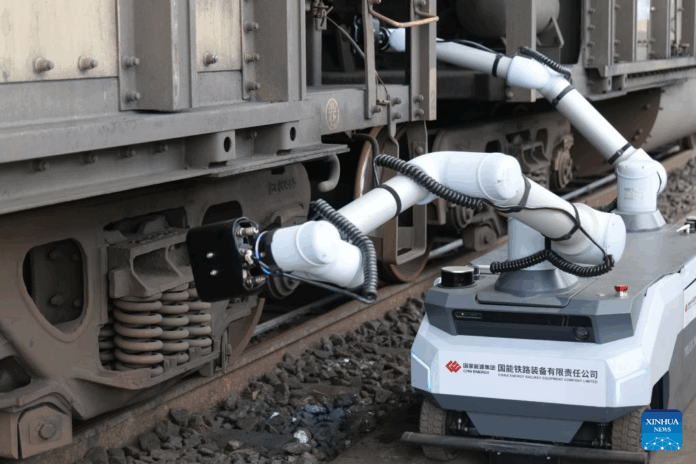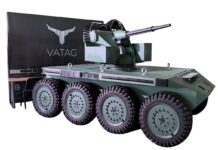China‘s first set of intelligent inspection robots for freight trains has been put into operation at the port of Huanghua in China’s northern Hebei province, demonstrating a maximum capacity of 10 trains per day.
Wang Peng, deputy general manager of the Suning Maintenance Branch of China Energy Railway Equipment Co., Ltd. said the robots have achieved a 100 percent recognition rate for common train faults.
“The set of robots – one checking the bottom of the train and two checking its sides – can inspect 54 cars in 135 minutes,” Wang said.
Since its first launch on May 11, the robotic inspection system has been in use at the train maintenance depot in Huanghua.
According to Wang, the number of robots inspecting side parts is expected to reach 10 in four months. By then, an inspection task that used to take 16 people more than 50 minutes to complete will be completed by a team of robots in just 27 minutes.
Zhang Hao, a workshop supervisor who oversees the robots, said that the intelligent robots take photos of key areas during the inspection of a 648-meter-long freight train with 54 cars to gather information about faults.
“The 15-cm-thick robot can complete a circular inspection of the train’s bottom in less than three minutes, capturing and documenting all suspected faults before returning to its position to recharge and wait for the next command,” Zhang said.
Meanwhile, the two robots operating on the sides are equipped with two mechanical manipulators with three sets of joints for vertical, horizontal and rotational movements. A pair of robots scans one train car in about 2.5 minutes.
A set of three robots takes 9450 high-definition images during a train inspection. The intelligent system can quickly provide analysis results by comparing data, clearly indicating the location and more than 120 types of suspected faults.
“Robots really work with more accuracy than humans,” admitted Liu Dawei, a veteran maintenance worker who uses specialized tools to measure wheel sizes when inspecting trains.
According to him, it is especially difficult to check bearings at the bottom of the train, where the narrow gap is less than 50 cm from the ground.
“During the manual inspection for cracks or oil leaks, I had to crouch down to get a closer look. After inspecting 54 railcars, my legs went numb,” he said.
The port employs more than 400 people who carry out technical inspections in four shifts around the clock. All freight trains that complete their transportation at the port must be inspected here.
As an important energy port in northern China, more than 50,000 freight trains are expected to arrive in Huanghua this year, mostly to transport coal.









